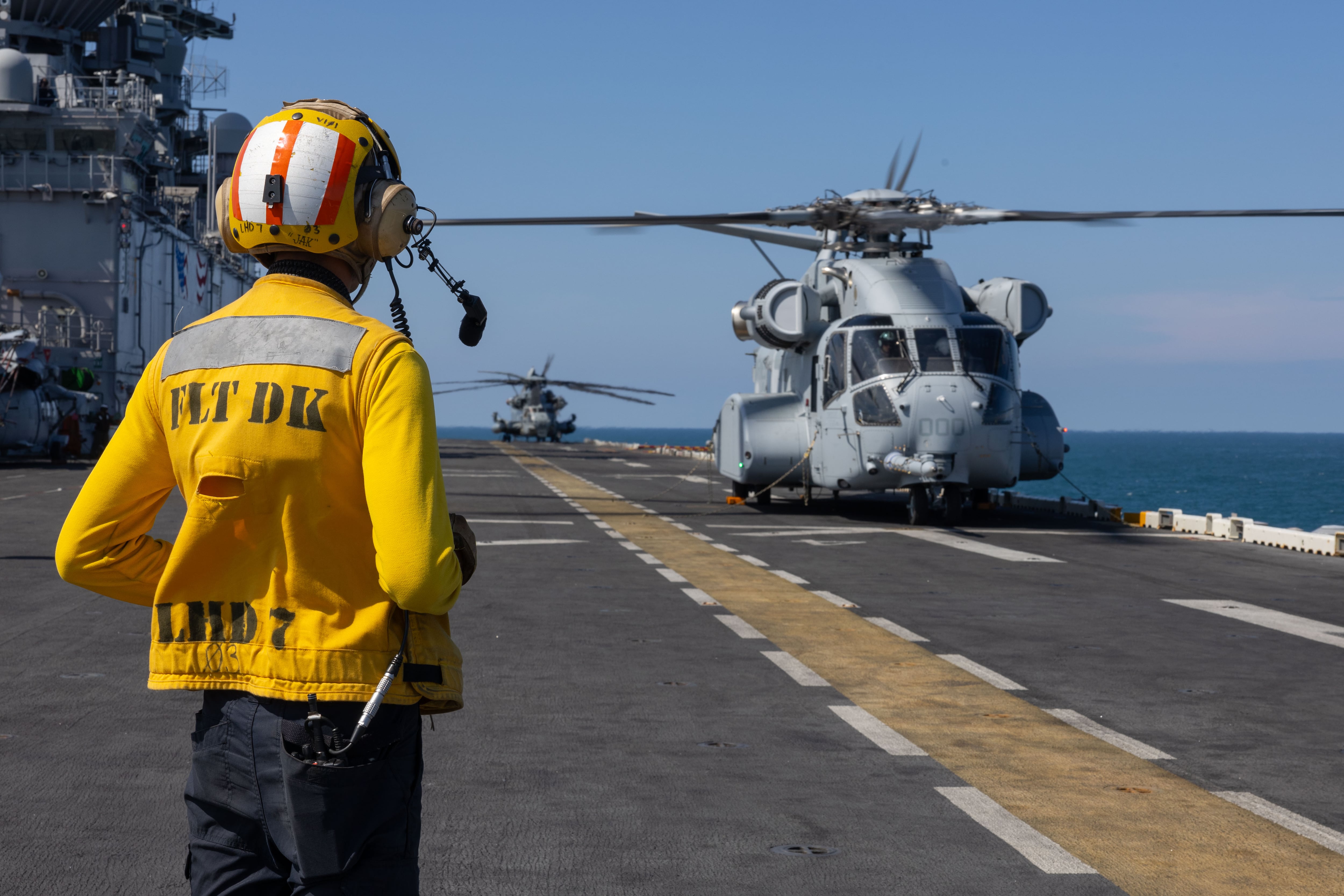WASHINGTON — The U.S. Navy’s and Marine Corps’ F-35s become unpredictable to handle when executing the kind of extreme maneuvers a pilot would use in a dogfight or while avoiding a missile, according to documents exclusively obtained by Defense News.
Specifically, the Marine short-takeoff-and-vertical-landing variant and the Navy’s carrier-launched version become difficult to control when the aircraft is operating above a 20-degree angle of attack, which is the angle created by the oncoming air and the leading edge of the wing.
Pilots reported the aircraft experiencing unpredictable changes in pitch, as well as erratic yaw and rolling motions. The documents identify the issue as a category 1 deficiency and define it as something that limits the aircraft’s performance in such a way that it can’t accomplish its “primary or alternate mission(s).” In this scale, category 1 represents the most serious type of deficiency.
Click here for more on the hidden troubles of the F-35.
A Lockheed Martin executive told Defense News in a statement that he expects the issue to be resolved or downgraded soon as a result of software fixes.
“We’ve implemented an update to the flight control system that is planned for integration in the third quarter of this year — and we expect this item to be resolved or downgraded,” said Greg Ulmer, Lockheed Martin vice president and general manager of the company’s F-35 program.
The Pentagon’s F-35 program office did not respond to written questions from Defense News by press time, despite repeated follow-ups over a period of months.
In a deficiency report from the fleet, aviators said the issue "will cause modal confusion, prevent precise lift vector control, and prevent repeatable air-to-air combat techniques, resulting in mid-air collisions during training, controlled flight into terrain, and aircraft loss during combat engagements with adversary aircraft and missiles," according to the documents.
“Fleet pilots agreed it is very difficult to max perform the aircraft” in those circumstances, the document notes.
The U.S. Navy and Marine Corps as well as the United Kingdom have noted the deficiency as a leading priority.
The fleet will, in the near term, mitigate the issue by enforcing minimum separation rules between aircraft in flight, the documents said.
‘That ain’t working’
A retired Navy fighter pilot who reviewed the documents for Defense News said the ability to maneuver the aircraft above a 20-degree angle of attack is important if the aircraft needs to quickly maneuver to avoid a missile or during aerial combat with another aircraft.
“You’re telling me that the latest, greatest, $100 million aircraft can’t perform?” the aviator said.
The issue, if left unresolved, would dovetail in the worst way when combined with another issue reported by Defense News: At extremely high altitudes, the Navy and Marine Corps versions of the F-35 can only fly at supersonic speeds for short bursts of time without risking structural damage and loss of its stealth capability, a problem that may make it impossible for the Navy’s F-35C to conduct supersonic intercepts.
“It has random oscillations, pitch and yaw issues above [its] 20-[degree angle of attack]," the aviator said. "[So] if I had to perform the aircraft — if I had to maneuver to defeat a missile, maneuver to fight another aircraft, the plane could have issues moving. And if I turn around aggressively and get away from these guys and use the afterburner, [the horizontal tail and tail boom] start to melt or have issues.”
The issue with control above 20-degrees AOA gets to one of the main debates about the aircraft: What if it needed to get into a dogfight? The F-35 is supposed to detect and kill its prey at range with missiles — either its own or from another platform in the network. But history has taught naval aviation that ignoring the possibility of close combat with another aircraft can prove deadly.
“This was not designed as a [traditional] fighter,” said Jerry Hendrix, a retired naval flight officer and analyst with Telemus Group. “This was meant to fight at distance with missiles. If you got in close, if you had to go to guns, that ain’t working.”
In a statement addressing a broad range of issues reported exclusively by Defense News, Ulmer, the Lockheed executive, defended the performance of the jet.
“The F-35s today are meeting or exceeding performance specifications and delivering unprecedented capability and safety compared to legacy fighter aircraft. These issues are important to address, and each is well understood, resolved or on a path to resolution," Ulmer said. “We’ve worked collaboratively with our customers and we are fully confident in the F-35’s performance and the solutions in place to address each of the items identified.”
An active-duty naval aviator who reviewed the documents for Defense News said the issues are reflective of an aircraft that packed in a lot of new technology, adding that, historically, all new jets have had problems.
“That document looks like growing pains for an aircraft that we tried to do a whole lot to all at once,” the aviator said. “You’re going to see that if you dig back at what Super Hornets looked like for the first few years. Go back in the archives and look at Tomcat — think about that with the variable sweep-wing geometry, the AWG-9 Radar.
"There was a lot of new technology incorporated into the aircraft, and there are always going to be growing pains.”
Valerie Insinna in Washington contributed to this report.
David B. Larter was the naval warfare reporter for Defense News.





